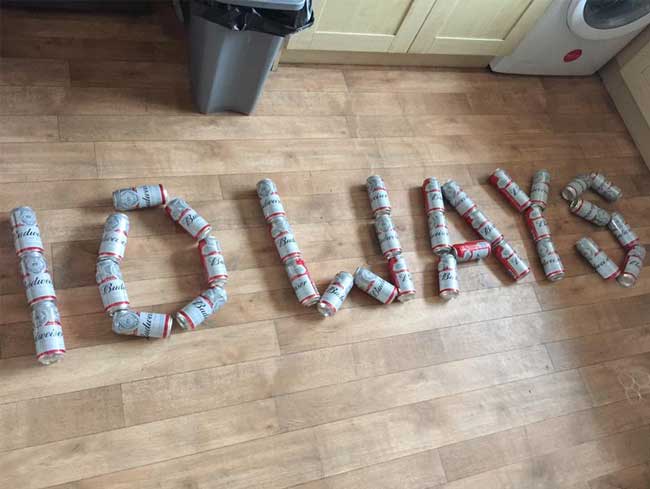With 6 bottles of Johnnie Walker sold per second across the world you could say it’s a rather popular drink but do you think you could tell the difference between the various labels and do you know how to save money when drinking it?
Johnnie Walker is what’s called a ‘blended Scotch whisky’ but what does that mean?
There are 5 types of Scotch Whisky:
- Single malt Scotch – “Single” meaning a whisky comes from one single distillery. 100 percent malted barley.
- Single grain Scotch – “Single” meaning a whisky comes from one single distillery. The grains may include barley but can involve other cereals such as corn, wheat, or rye.
- Blended Scotch – If a Scotch is bottled from more than one distillery, we’ll use the word “blended”.
- Blended malt Scotch – A blended 100 percent malted barley mix from various distilleries.
- Blended grain Scotch – A grain whisky in Scotland may include barley, but can involve other cereals such as corn, wheat, or rye. Blended means it has come from various distilleries.
To be called Scotch it must be matured on Scottish soil for a minimum of three years in oak barrels and bottled at a minimum of 40 percent abv (alcohol by volume):
Know a good price Vs an expensive price
Here are the best ever prices we’ve seen Vs the most expensive, the key is to buy when it’s cheap
- Blue £90-£134 a bottle
- Platinum £43-£70 a bottle
- Green £30-£45 a bottle
- Gold £28-£45 a bottle
- Double Black £22.99-£35 a bottle
- Black £16-£28 a bottle
- Red £12-£19 a bottle
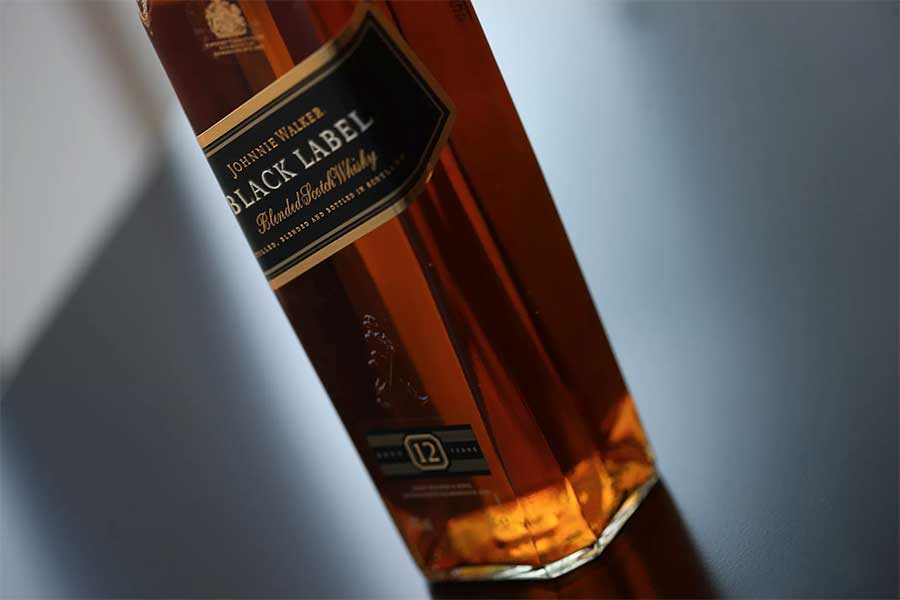 Is there a right or wrong way to drink whisky?
Is there a right or wrong way to drink whisky?
It really depends on you and your taste buds but it’s important to never let some snob tell you otherwise, there are however certain things you can experiment with to find your favourite/perfect drink:
Cold or room temperature?
Temperature can play a massive part in Whisky drinking, for instance, Gold label is often served and recommended to be chilled when drinking so consider doing this or even trying it with other labels. Cold alcohol often will be less harsh but may loose some of the flavour.
Should I drink from a special glass?
Johnnie Walker say: “A good, solid tumbler (a short glass with a heavy bottom) if you’re drinking your whisky neat, or with a little water or ice. For ‘long’ whisky drinks, use a ‘highball’ – a tall, slim, straight-sided glass”
Ice, Water, Soda or cocktail?
The key here is to experiment. Consider buying some Whisky stones (they’re like ice-cubes but normally made from rock, metal or plastic) they allow you to chill the drink without diluting it but you may prefer a little water so ice might be better for you.
‘The initial impact of a chilled Scotch whisky on the palate is a sense of refreshment, with the impact of the flavours not as great as it would be at the ambient temperature, as chilling dials down some of the flavours,’
‘However, the chilled liquid picks up temperature from the mouth very quickly, the temperature of the palate being 37C, which is body temperature. As the whisky warms up, this brings out more flavour across the entire mouth.
‘The smaller the sip of whisky, and the longer it remains on the palate, the greater this warming effect, and the more the flavour evolves, though it’s never going to be equivalent to a sip of whisky served at the ambient temperature.’ – explains Greg Tucker, a taste psychologist at The Marketing Clinic.
The cheaper whiskies will be better for cocktail making simply because the other flavours probably will overpower the more expensive whiskies.
Slow down when drinking and smell it
Smell it, you won’t want to take a harsh sniff but just let the smell slowly flow into your nose.
Allow a good 10 seconds for your mouth to take in the taste. Try and note down the flavours and scents you’re experiencing.
Is it Whisky or Whiskey?
If it’s Scottish it’s Whisky. If it’s from Ireland or the US it’s Whiskey.
Know the difference & when you should drink them
The short answer is to drink what you want and when you want it as if you don’t like the taste, then why bother? These tips might help you better understand the differences and help you find your favourite:
- Blue [controversial due to its high price] – Aged at a minimum of 25 years, every bottle is serial numbered and sold in a silk-lined box, accompanied by a certificate of authenticity. There is no age declaration for Blue Label. The nose is fragrant, with good body. Notes of oak, crisp spice, dried fruit, and pastries. Berry fruits, aniseed, hints of cedar, a touch of spice, and citrus come through. The palate is supple and well balanced. Good toffee and hints of very wistful smoke are followed by chocolate, hints of grass, and a good hit of malt. The finish is floral, oaky. Good length urged on by a plume of well-kept, highland-style smoke, with dried fruit, spice, and honey
- Platinum [often a favourite of long-term drinkers] – Sweet, rich, and deep notes of maraschino cherries, toffee caramel, vanilla, baked rhubarb crumble, and a very thin whiff of smoke on the nose. The richness continues into the palate, which is sweet and warming, with creamy malt, oats, and cereal. A spicy vanilla cinnamon dustin complements with gentle smoke. The finish is dark chocolate with caramelized peel.
- Green [Often the best value of the premiums] – Green Label is a vatted malt that is a blend of about 15 individual single malts, the signature malts being Talisker, Cragganmore, Linkwood, and CaolIla. The nose is quite rich and full. There are notes of mocchaccino and espresso coffee, wood smoke and a fireplace, a touch of bitter chocolate and oak. The palate is of medium-body with notes of crisp cereals, coffee beans and chocolate, a date note with a touch of walnut. The finish is quite long and spicy with honeyed sweetness and oak.
- Gold [Recommended to be served chilled] – a blend of over 15 single malts. It was derived from Alexander II’s blending notes for a whisky to commemorate Johnnie Walker’s centenary. Nose of honey and heather with thick caramel notes and a subtle nutmeg spice. Dried meadow flowers and a hint of fresh banana. Smooth and succulent palate with a honeyed sweetness that’s typical of Johnnie Walker. There’s more to this though- the floral elements are quite prominent and there’s a spiced sweet vanilla note, too. The finish is long, sweet, and toffee-like.
- Double Black [extra peat and smoke malts compared with Black] – The Nose is Slightly smoky and almost medicinal on the nose, it offers up hints of vanilla, a little tar, a touch of barbecue sauce, citrus and malt. The palate has Good body and very creamy with a sublimely malty core. It offers up a surprising level of peat smoke which works really well. Creamy sweetness, hints of soft wood smoke, salty butter, custard and cereal grains. The Finish has good length with notes of malt, boiled sweets, black pepper and cool smoke.
- Black [admired the world over as the ‘gold’ standard] – Black Label is a blend of about 30-40 whiskies, each aged at least 12 years. The nose is quite full. There are notes of winter spice and treacle, hints of white pepper and a little citrus. The palate is quite rich and full. There are notes of wood smoke and dry spice, hints of barley and cereal with creamy toffee and a distinct herbal note. The finish is quite fruity and long with a note of sultanas and mixed peels. Also commonly drunk with Soda.
- Red [good for mixing]- a blend of around 35 grain and malt whiskies, mostly 3-5 years old. It is intended for making mixed drinks including with sofa and ginger ale. Favourite Scotch of Winston Churchill, who mixed it with soda.
Can I really save money after I’ve drunk it?
Amazingly yes but it will depend on the bottle and box you’ve got. People actually buy EMPTY bottles of Whisky on eBay etc, we’ve seen Blue bottles sell for £10-£20. This eBay link shows recent SOLD listings (you can tell because it has a Green price) which proves you can make a few quid back for each bottle you drink.

Where can I learn more about Whisky drinking?
- Drink it and make notes of which you prefer, this is the best way to find your favourite and will quickly stop you from wasting money on the others.
- Buy a decent Whisky/Whiskey book
- Speak to others at the bar
- Visit Scotland and experience it

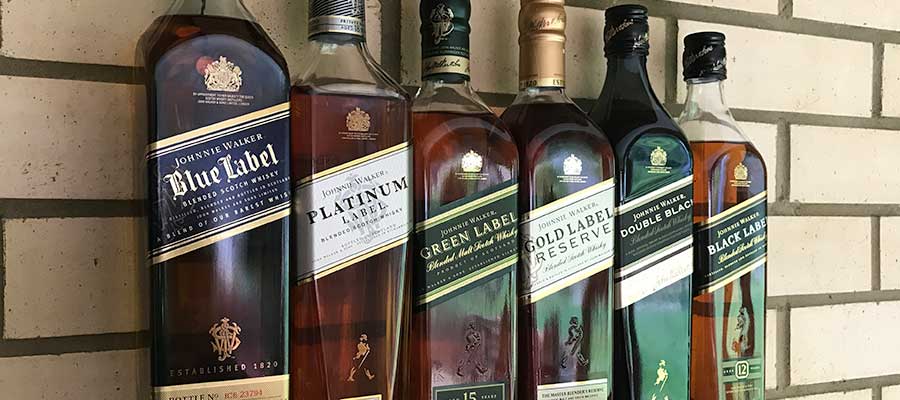


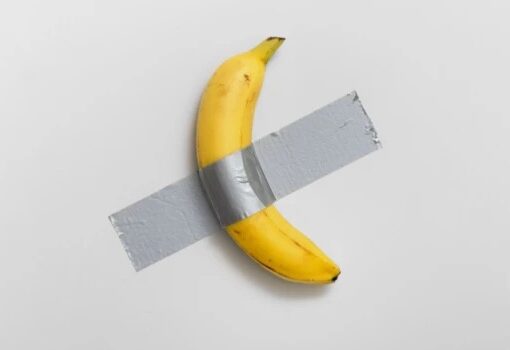

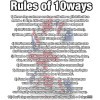


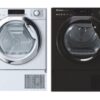






![Google are paying up to £30 for your [Scottish / English or Welsh] voice](https://10ways.com/wp-content/uploads/2016/08/4aug3-100x100.jpg)









